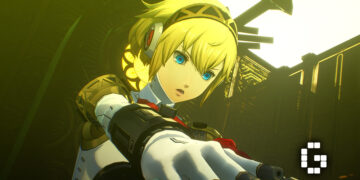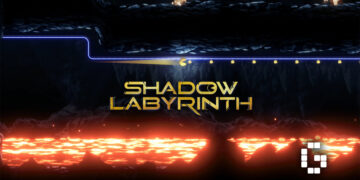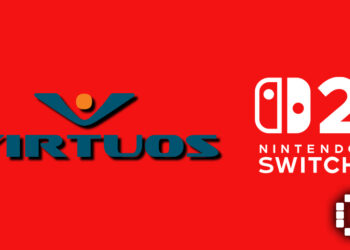We got the opportunity to interview Ichiro Hazama and Masanobu Suzui, the producer and co-director of the latest Final Fantasy rhythm game: Theatrhythm Final Bar Line.
This will be the third game in the Theatrhythm Final Fantasy spin-off series that aims to merge the RPG genre with the mechanics of a rhythm game. It’ll also be the biggest game in the series with over 300 songs from across the Final Fantasy series and more to come through DLC.
Ichiro Hazama is the producer of the Theatrhythm Final Fantasy series as well as the current producer for Kingdom Hearts including its own rhythm game spin-off, Kingdom Hearts: Melody of Memories.
Masanobu Suzui is the founder of the video game developer Indieszero who has developed the Threatrythm series since the first title back on the 3DS. Suzui himself has served as the director of every game in the series. This means both producer and co-director are returning to the franchise for its latest release. In this latest interview, they spoke more about using their experience with past Theatrhythm games to make Final Bar Line the best it can be.
Were there any lessons you learned from Kingdom Hearts Melody of Memories that you wanted to bring forward into Theatrhythm Final Bar Line?

Ichiro Hazama: Kingdom Hearts: Melody of Memory taught us the importance of providing a range of difficulty levels so that everyone from beginners to advanced players can fully enjoy the tracks, as well as the value of creating different modes to ensure that players remain engaged for a long time.
The expertise acquired from working on Kingdom Hearts: Melody of Memory has allowed us to make Theatrhythm Final Bar Line a fully satisfying game that will keep players coming back for more!
Some Final Fantasy titles have way more music than others, such as FFXIV. How do you make sure that everyone’s favorite tracks are getting represented in Theatrhythm Final Bar Line?

Masanobu Suzui: First of all, we began with the fundamental concept of creating a title that would function as the culmination of the Theatrhythm series, and to that end, we wanted to include as many tracks as possible. The development team drew up a long list featuring all the tracks that have appeared in the Final Fantasy series, before having staff sit down to go through the process of trimming that list down while taking into account a wide variety of opinions we could.
We made sure to include all of the tracks which have been popular since the launch of the Theatrhythm game series, as well as other tracks which were suitable to use in a rhythm game. After that, we began the long process of editing the list down to a manageable quantity, which involved many conferences and meetings with the team and Square Enix.
It was also important to ensure that tracks that were commonly performed as part of concert setlists as well as those featured in television commercials or promo videos that were closely associated with certain titles were included. We also took into account customer feedback via social media and online surveys conducted to pick out popular tracks from each Final Fantasy title. We did our absolute best to produce a tracklist that features all of the fan favorites from every title in the series.
Besides the content quantity and the distinct aesthetic of the game, what are some of the biggest changes/adjustments that Theatrhythm Final Bar Line brings compared to All-Star Carnival?

Ichiro Hazama: This title has been positioned as the third major title in the series, carrying on the legacy from Theatrhythm Final Fantasy: Curtain Call — released on the Nintendo 3DS.
Three different systems have been developed for the title — notably, BMS for battle tracks, FMS for the field (overworld) tracks, and EMS for the tracks played in event scenes. The different key trigger types and simultaneous button push requirements that have been implemented on this base have been upgraded significantly from the previous title, as a result of the expertise and knowledge we have developed through working on Theatrhythm Final Fantasy: All-Star Carnival and Kingdom Hearts: Melody of Memory.
The Series Quests, which allow players to unlock new tracks and characters while looking back fondly on the key moments of each series, has been given a more strategic depth with the addition of RPG facets — including status ailments and elementals. The online multi-battle feature allows online competition between as many as four players and also rewards players with collector cards. Players can also exchange profile cards featuring their favorite summon stones at the end of each battle.
As a major console title, this game has been designed with enough tracks, modes, and features to keep our players entertained for years.
The online multiplayer aspect is definitely something to get excited about and really makes the game feel all that more replayable. How much different will it be compared to a local co-op or solo experience, and is it still friendly for casual players?

Masanobu Suzui: I agree that multiplayer battles really provide a tremendous boost in replayability. Some eight years have passed now since the release of Theatrhythm Final Fantasy: Curtain Call, yet I know that multiplayer parties are still being organized for the title. With a maximum of four players able to compete at any one time in this title, it should be much easier even for casual players to participate. The game has been designed so that every player can enjoy the multiplayer battle experience. While not everyone can finish in the first place, there should be plenty of satisfaction for those who finish second or third (or even fourth, for that matter).
As for how the multiplayer online battle will work, Burst use will be restricted during the early phases of the battle, but multiple Bursts will be able to be triggered simultaneously in the second half. This will create havoc (in a good way), and ensure that the element of luck will also have a small influence on the outcome.
There is also a wide range of other benefits in participating in online play, such as being able to send messages to other players via chat bubbles before and after the battle, and the ability to replay battles with the same participants in the same room in order to increase the odds of receiving rarer collector cards.
Above all, the greatest single merit to encourage players to use online multiplayer battles is that the summon stones on the profile cards you receive may contain rare and powerful effects. Not only do online multiplayer battles provide plenty for the victor, but they also provide significant merits for all participants, which serves to encourage even more casual players to give them a go!
Closing Thoughts

Holding this interview gave me a lot more insight into the making of Theatrhythm Final Bar Line. I have to thank Hazama-san and Suzui-san for partaking in it.
Theatrhythm remains one of my personal favorite Final Fantasy spin-offs for what a celebration they are of the franchise as a whole. Music is an extremely important part of Final Fantasy so bringing all the scores of all the different games together to listen to and appreciate is highly valuable.
It’s also just nice seeing each Final Fantasy game crossover. Yeah, VII and XIV tend to get more love (XIV is enormous all things considered) but still, you know they care when even Benjamin from Final Fantasy: Mystic Quest all the people get to be playable. I’ll gonna enjoy using him alongside Wakka, Tifa, and Vivi to fight Kefka all to the tune of Dancing Mad (still the best Final Fantasy boss song, fight me).
Theatrhythm Final Bar Line launches for the Nintendo Switch and PS4 on the 16th of February 2023.









![[GUIDE] Persona 5: The Phantom X Codes & How To Redeem Them](https://cdn.gamerbraves.com/2025/07/P5X-Codes_Guide_FI-360x180.jpg)



![[ASIA EXCLUSIVE] Bringing Back a Classic: Inside the Making of FINAL FANTASY TACTICS – The Ivalice Chronicles](https://cdn.gamerbraves.com/2025/06/FFT-Ivalice-Chronicles_Interview_FI2-360x180.jpg)


![[EXCLUSIVE] Gearbox Executives Share Details on Borderlands 4 – Story, Weapons, and Lessons Learned](https://cdn.gamerbraves.com/2025/06/Borderlands-4_Interview_FI-360x180.jpg)
![[EXCLUSIVE] Wan Hazmer Reveals How No Straight Roads 2 Expands Beyond Vinyl City with Shueisha Games](https://cdn.gamerbraves.com/2025/06/NSR2_Interview_FI-360x180.jpg)












